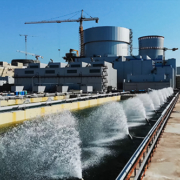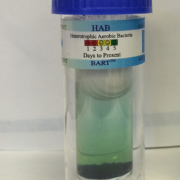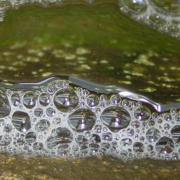Worried about a Legionellosis Lawsuit from your Cooling Tower?
Why don’t many owners of cooling towers – especially comfort cooling towers in close proximity to pedestrians – assess and manage the risk of a Legionellosis infection from their cooling tower? Here’s a few reasons that my clients have offered.
They don’t have a clear understanding of the issues.
Facility managers usually have little or no understanding of water quality or how waterborne bacteria can cause a pneumonia-like infection that can be fatal. Nearly everyone else in the building have even lower levels of understanding of the issues. The most likely candidate is the outsourced water treatment service representative whose responsibility is to measure water chemistry and ensure the correct dosage of water treatment chemicals – not assess and manage risk of Legionellosis infections.
They don’t know what to do – or they have started an effort that was not successful.
Besides the enormous amount of information about legionella on the Internet, there are numerous published guidelines and one non-binding standard defining measuring, monitoring and implementing corrective actions for cooling water systems. A study conducted by the National Centers for Disease Control and Prevention (CDC)1 found that there is no single set of widely accepted guidelines for the primary prevention of the disease. At least four (4) federal agencies have been involved in guideline or policy development for the primary prevention of Legionellosis as well as numerous state and local governments involved in the creation of guidelines for legionellosis prevention in their area of jurisdiction. In addition, several professional organizations have developed guidelines. The challenge is to determine the best sources of guidance for their specific cooling tower.
They don’t understand the ASHRAE Standard.
The publication of the ANSI/ASHRAE standard, Standard 188-2018, Legionellosis: Risk Management for Building Water Systems, establishes the minimum legionellosis risk management requirements for building water systems and defines an audit process. This audit process requires creating a team comprised of members who have specific experience, skills and expertise about the water-related facilities, water chemistry and bacteria and regulatory issues. This process requires time and a significant level of effort to complete the initial audit process followed by implementation of a program of routine monitoring and corrective action.
They don’t understand the risks.
\In my experience, this is the foundational reason why owners of cooling towers don’t assess and manage risks – it’s not just the lack of understanding about the mechanisms of legionellosis infections from cooling towers – but an understanding of the consequences – severely ill persons, deaths, negative business impacts such as temporary closure of facility and reputation damage and lawsuits. Experts have identified cooling towers as the source of over 50% of the Legionnaire’s Disease outbreaks worldwide.2 A trade organization specializing in managing claims and litigation, CLM, reported settlements and jury awards range from $255,000 to $5.2 million3 for Legionellosis-related legal cases. Analyzing risk requires technically-trained persons to speculate about the possible scenarios – a very unfamiliar skill – to make a sound decision about the next steps for your facility.
Are you worried about legionella in your cooling tower? Or in your building’s water systems? We’re here to help. Call us (609-896-4457) or send us an email (huchler@martechsystems.com).
P. S. Don’t forget to subscribe to our blog.
[2] https://en.wikipedia.org/wiki/List_of_Legionnaires%27_disease_outbreaks
[3] CLM, https://clmmag.theclm.org/home/article/Legionnaires-Disease-and-Premises-Liability






